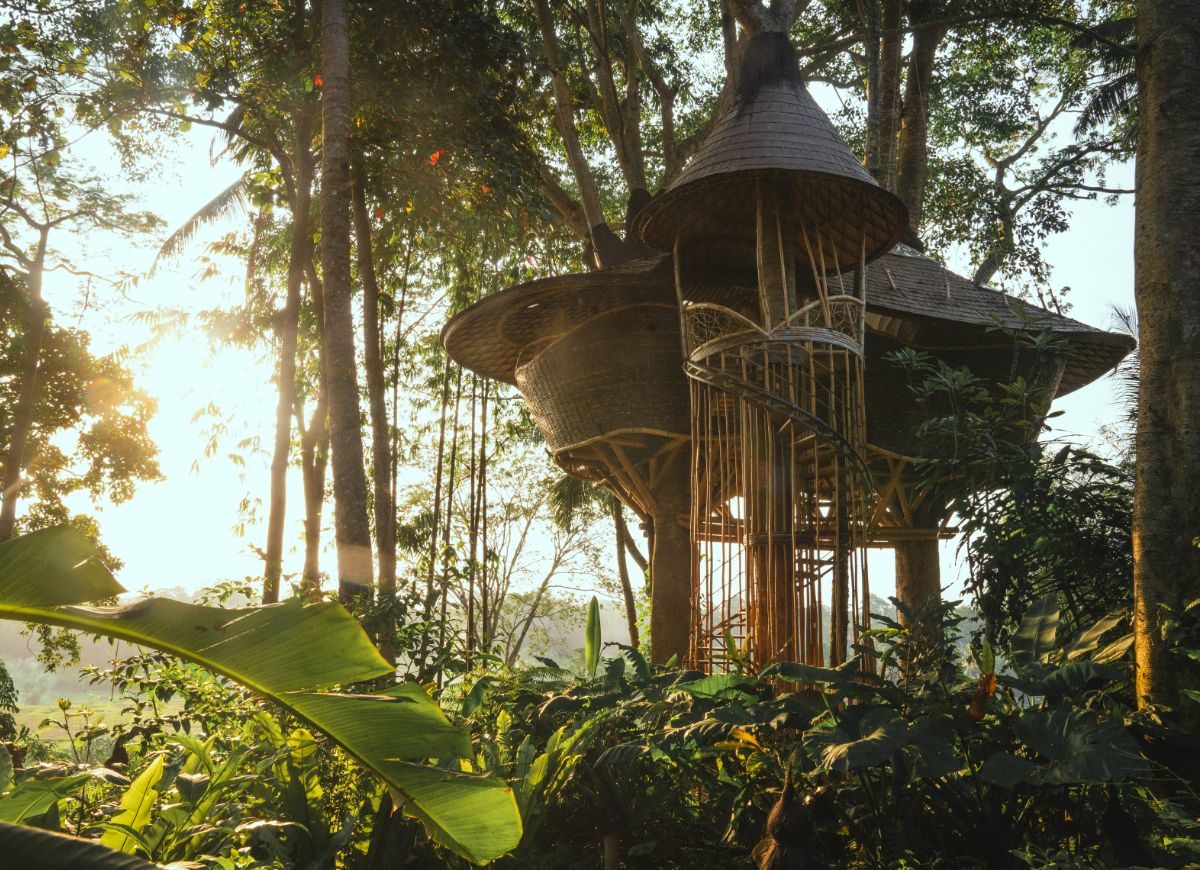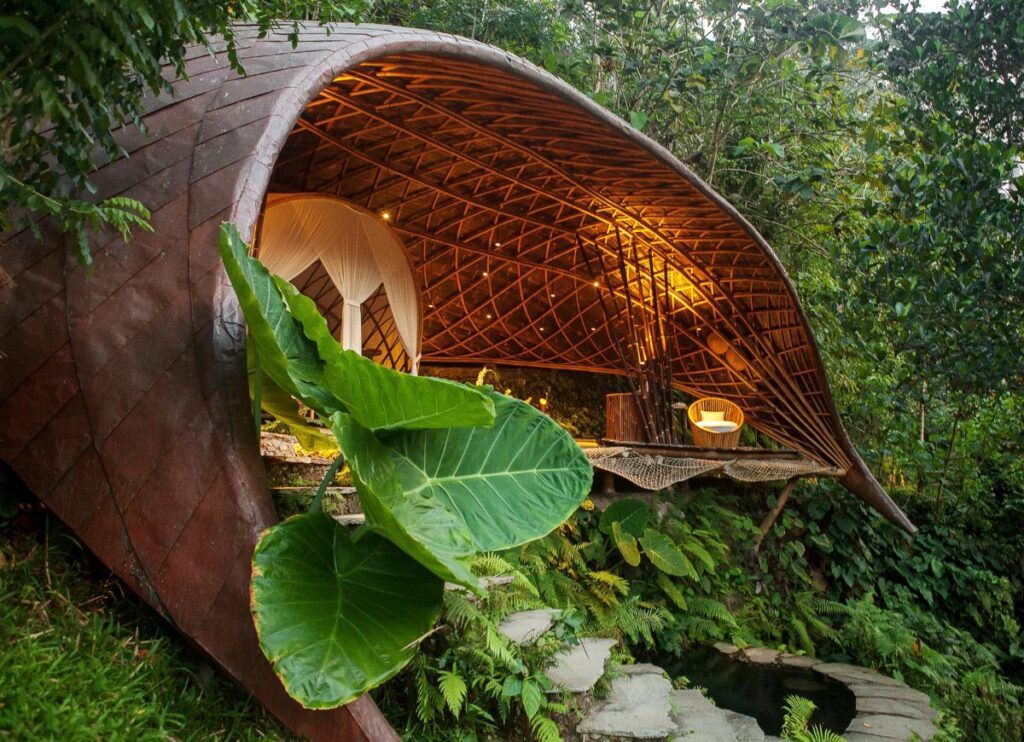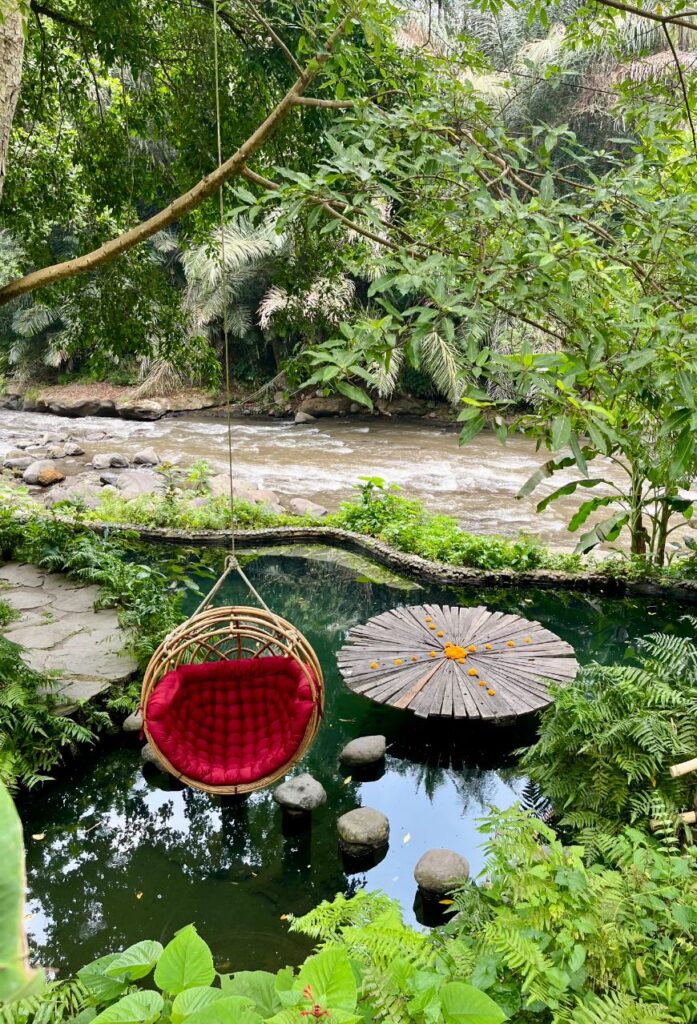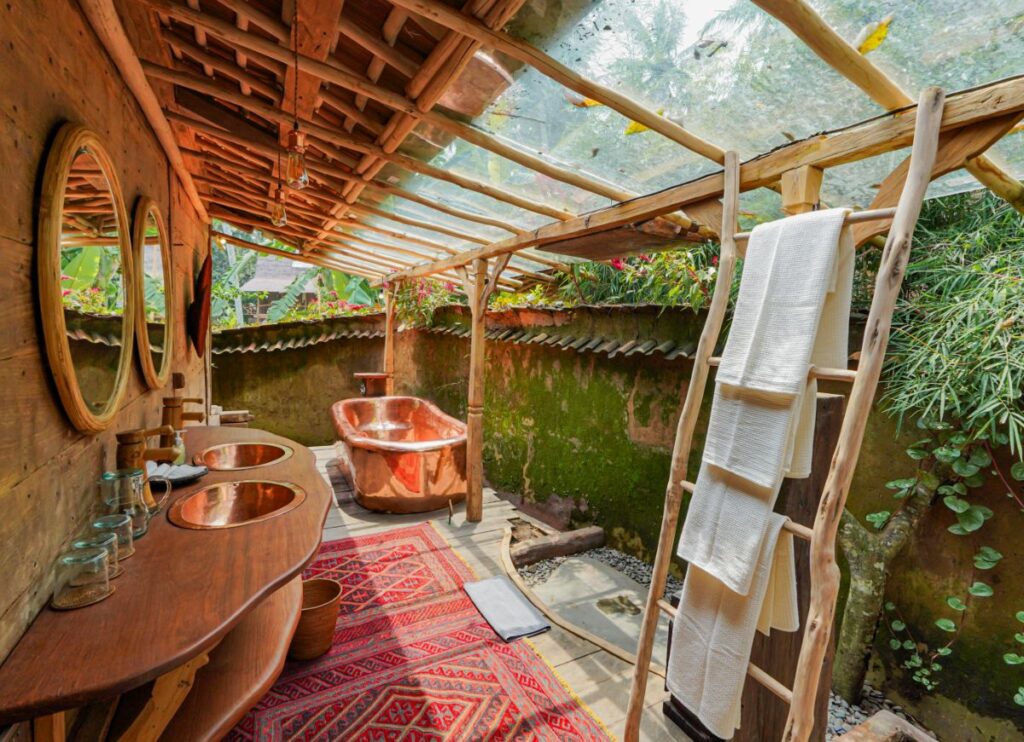Indonesia Resorts
These breathtaking bamboo resorts are a respite in a demanding world
resorts

Bamboo architecture – Bambu Indah, Bali, Indonesia
For those seeking out a retreat in Indonesia, choose a place where natural materials abound, curves and open spaces are ubiquitous, and you can embrace the essence of the natural environment with all your senses – a place like Bambu Indah or Cempedak
If we had never seen a building before, what would we make? This is the question Elora Hardy, designer and founder of IBUKU, a sustainable architecture and design firm in Bali, asks whenever she sets out to create a new structure. The answer, suggests Elora, might just lie in the humble bamboo shoot.
Bamboo grows rapidly, over a four-year growth cycle, and requires little maintenance, compared to traditional construction materials. Once it is planted in the soil, a shoot will begin growing roots, and an entire bamboo forest can stem from this single shoot of bamboo, making it one of the most environmentally conscientious building materials conceivable. Bamboo is also durable, remarkably strong (it is often likened to steel and has many similarities to carbon fibre) and flexible, allowing designers immense creative freedom in the structures that can be built with it.
“One thing that’s clear is this material is a marvel of engineering,” says Elora, whose firm has built over 60 bamboo structures in Bali and around Indonesia since the company’s conception in 2010. “Our only limit of what’s possible with this material is our own creative and innovative minds.”
IBUKU’s goal is to provide spaces in which people can live in an authentic relationship with nature; where they can feel simultaneously protected by a structure and connected with the environment. Elora and her team always put the idea of how different spaces and materials can make one feel, front of mind when designing their projects. “When we do use bamboo it’s because its character has fundamentally caught our hearts,” she said at a recent event in Bali, pointing to an image of one of her team’s unique bamboo houses. “Beyond its sustainability is character… these [bamboo] columns feel familiar, it’s almost as if you want to lean against them as you would lean against the arm of a friend.”






Born to be wild
Elora is the daughter of John Hardy, a renowned Canadian jewellery designer who has been based in Bali since the 1970s. John, along with his wife, Cynthia, created luxurious nature retreat, Bambu Indah, in Ubud in 2005, when they installed 11 antique Javanese bridal homes that they had collected on their travels on a jungle cliff top overlooking padi fields. At first, it was a place for their friends to come and stay. Then, they turned it into a hotel, and today, travellers come from all over the world, drawn by the Hardys’ dream of a regenerative world where nothing is used that cannot be composted back into the earth. They call it their Garden of Eden – and I am inclined to, too.
Garden of Eden
It is hard to describe this breathtaking place that feels a universe away from the hustle-bustle and busy brains of modern life. Bambu Indah’s curvaceous, warm bamboo villas are the epitome of romance and serenity, but it’s the area down by the river where the magic manifests. After taking a quirky three-person bamboo elevator down from the aptly-named Elevator Sunset Bar – boasting views over the rice fields – and walking through the peaceful jungle with its tamarind, cinnamon, palm and banyan trees, past trickling streams and over man-made bamboo bridges, you arrive at the top of a small hill. In the distance, the Ayung River flows past the tranquil banks, where low, rustic tables, beanbags for two and the occasional egg seat hanging from a tree branch invite rest and retreat. Red and yellow cushions create a soft landing for weary souls, who stretch out and read alongside the still waters of enchanting natural swimming pools peppered with lily pads.
A narrow boardwalk connects each peaceful nook of this almost fairytale-like place, which is surrounded by and seamlessly incorporated into the lush greenery of the Ubud jungle. I have seen some breathtaking places in my life, but this riverside sanctuary feels almost dream-like; it appears as a scene from a film – one where, perhaps, the inhabitants have fled the rat race for a natural utopia, where a community lives in harmony with the natural environment – the kind of place, as Elora suggested, where human beings were meant to live.
If this all sounds a little woo-woo, it doesn’t have to be. I spot a few people working on their laptops, and couples gather in the casual bamboo restaurant, River Warung, where a set menu of delicious Balinese cuisine changes daily.




A new paradigm
Elora says that people today need to be reminded that we belong in the natural landscape. Neither human beings, she says, nor anything occurring in nature, has right angles. We have created a world of hard, sharp buildings, and continue to do so, perhaps for no other reason than this is what we have always done.
“We like to ask this question: If we had never seen a building before, what would we make?” says Elora. “Design always begins with the site and we feel that buildings can’t be rectangular unless the site is. A bedroom does not have to be a bed in a box.
“Imagine waking up here,” she says, flicking to another image of an open-air villa with a bed, canopied by long limbs of curved bamboo. “This little place is what you call a love nest. Have you ever woken up from a nap under a tree, watched the light dappling through the branches? I wonder if there’s something in that that we’ve forgotten that we need.”
Elora adds that bamboo provides the perfect balance of connection and protection.“We have, for millennia, been building in order to shelter and defend ourselves… but now as a default, we’ve taken it too far,” she says. “We have given up so much of life’s texture through the way that the world has been industrialised. Retaining the texture of a floor, for example, it can ground us. It can give us a sense of closeness to the world around us. Imagine the first step of your day onto soft, warm, textured bamboo skin. Imagine the first step of a life. How does that tune your mind?”
This line of thinking has created a new vernacular, with thousands of buildings now following in IBUKU’s and John and Cynthia’s footsteps.
“So why bamboo? Bamboo is the future. It is the most beautiful, versatile, tallest and strongest material that we could possibly choose. The rainforest is almost gone, plywood is mostly made from the rainforest and cement has a carbon load that is not going to help the future. That leaves bamboo, and if children plant bamboo today, in eight years they will have timber ready to go and they will get timber every year for the rest of their life to build anything they need.”
John Hardy, Bambu Indah co-founder




Bamboo luxury
Andrew Dixon, too, believes wholeheartedly in the power of natural materials to positively impact how we feel within spaces. He is the co-founder of Nikoi Island along with Cempedak Private Island, a 17-hectare adults-only private island nine kilometres off the east coast of Bintan, Indonesia, and 91 kilometres from Singapore. Like Bambu Indah, bamboo is the primary building material seen on the islands. These bamboo structures blend seamlessly into the natural environment, with dramatic, unique crescent-shaped curved roofs made from local grass providing a natural symmetry while protecting from the elements. “This stands, in contrast to the often rigid and industrial feel of right-angle structures and modern, hard materials, providing a more relaxed and organic ambiance,” he says. “The structures on Cempedak also make the most of high vaulted ceilings so that the space naturally flows from the outside to the inside and provides incredible views. Whereas using modern materials can create a strong barrier between the room and its surroundings.”
Cempedak embodies barefoot luxury, offering guests an outdoor adventure that encourages them to explore the island and reconnect with nature. Each private and spacious villa boasts private plunge pools and huge decks. “Instead of the sounds of air-con in an airtight room, guests on Cempedak fall asleep to the soothing sounds of the ocean and the gentle sea breeze in open-air villas. The absence of TVs and bustling city noise fosters a genuine disconnect, creating a tranquil environment for relaxation,” he says.
Echoing the sustainability ethos of Bambu Indah, the team at Cempedak also goes to huge lengths to reduce, recycle, reuse, or upcycle any waste and, as a result, is zero-waste (less than 10 per cent of waste goes to landfill). Cempedak has also established a kitchen garden on the island, as well as a seven-hectare farm, which has been established using permaculture principles.
As someone who has experienced both Cempedak and Bambu Indah first-hand, I can testify to the relaxing and restorative effects of being inside a bamboo structure. For those seeking out a retreat in South East Asia, I can almost promise that if you choose a place to stay where natural materials abound, curves and open spaces are ubiquitous, and you can embrace the essence of the natural environment with all your senses, that you will return home feeling far more revived than if you had booked a regular – albeit luxurious – room in a hotel. This is the impact of architecture and design on our travel experiences – and on the human experience overall.
Latest Articles
Don't miss the latest from Luxury Travel
